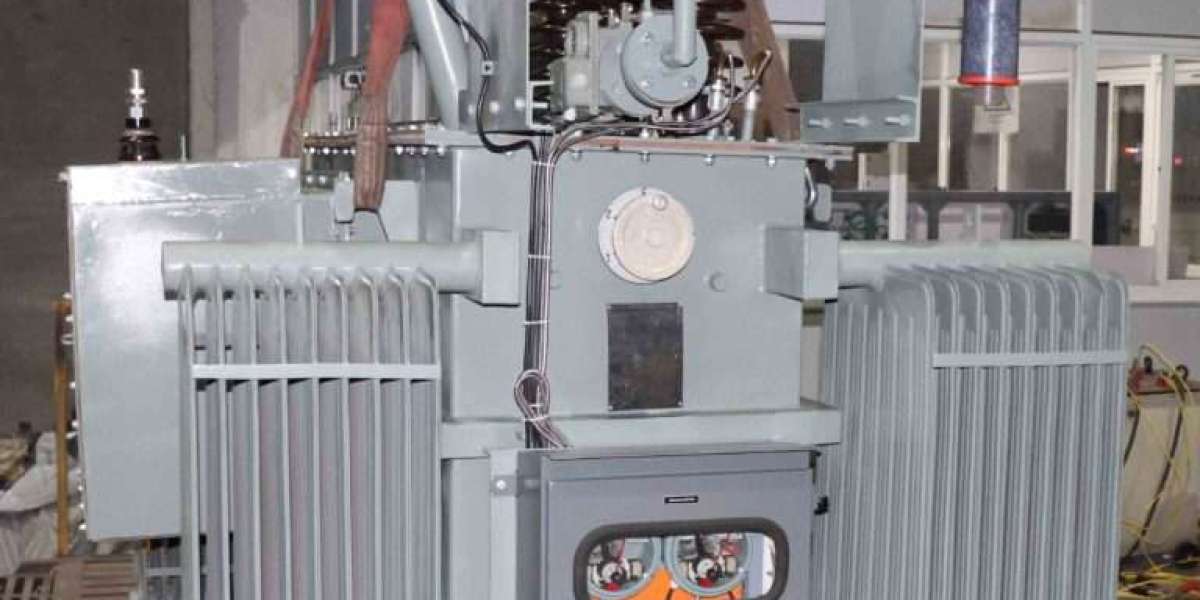Introduction
Transformers play a crucial role in the electrical power industry by transferring electrical energy between different voltage levels efficiently. They ensure the proper distribution of electricity across various applications, from power generation plants to industrial and household use. Among the many types of transformers, power transformers, distribution transformers, 3-phase transformers, and furnace transformers are widely used for specific applications. This article explores their functionalities, types, and significance in the electrical power system.
Power Transformers
Definition and Purpose
Power transformers are designed to transfer electrical energy between different voltage levels in power stations and substations. They operate at high voltage levels and are primarily used for transmission purposes, making long-distance power transmission more efficient by reducing energy losses.
Features of Power Transformers
- High Voltage Operation: They usually operate at voltages above 33 kV.
- Large Size: Due to their high power handling capacity, they are larger in size.
- Efficiency: Power transformers have high efficiency, often exceeding 99%.
- Cooling Mechanisms: They are equipped with oil or air cooling systems to dissipate heat generated during operation.
- Continuous Operation: They function continuously, making them essential in power transmission networks.
Applications of Power Transformers
- Used in power generation stations.
- Step-up and step-down voltage transformation in transmission networks.
- Industrial and commercial power distribution.
Distribution Transformers
Definition and Functionality
Distribution transformers step down the voltage from transmission levels to a lower voltage suitable for residential, commercial, and industrial consumers. These transformers ensure that electricity reaches end-users safely and efficiently.
Features of Distribution Transformers
- Lower Voltage Operation: Typically operates below 33 kV.
- Compact Design: They are smaller than power transformers and are often pole-mounted or placed in substations.
- Cooling Methods: Most distribution transformers use oil or dry-type cooling systems.
- Intermittent Load: Unlike power transformers, distribution transformers work under fluctuating load conditions.
- Energy Efficiency: Designed to minimize energy losses, ensuring a stable power supply to consumers.
Applications of Distribution Transformers
- Used in residential areas for voltage reduction.
- Power supply to commercial buildings and small industrial units.
Step-down voltage transformation for local distribution networks.
3-Phase Transformers
Definition and Operation
A 3-phase transformer is designed to operate in a three-phase electrical system, which is the standard for power distribution worldwide. It consists of three primary and three secondary windings arranged in either delta or wye configurations.
Features of 3-Phase Transformers
- Efficient Power Transfer: Used in industrial and commercial applications where high power is required.
- Compact Design: It is more efficient and space-saving than three single-phase transformers.
- Balanced Load Distribution: Ensures uniform power supply with minimal voltage fluctuations.
- Cooling Systems: Includes oil-immersed and dry-type cooling methods.
- Reliable Operation: It offers high reliability in power distribution networks.
Applications of 3-Phase Transformers
- Used in large industrial plants.
- Power supply for electrical grids and substations.
- Applications in manufacturing plants and heavy machinery operations.
Furnace Transformers
Definition and Role
Furnace transformers are specialized transformers designed to supply power to electric arc furnaces (EAFs) and induction furnaces used in steel plants, foundries, and metal industries. They handle fluctuating loads and provide a controlled power supply to the furnace operations.
Features of Furnace Transformers
- High Current Capacity: Capable of handling extremely high currents required for metal heating and melting.
- Voltage Regulation: Equipped with tap changers to adjust voltage levels based on furnace requirements.
- Robust Cooling System: Uses oil, water, or air cooling to manage excessive heat.
- Heavy-Duty Insulation: Designed to withstand electrical and thermal stresses.
- Short Circuit Withstand Capability: Can sustain heavy electrical surges and fluctuations in load.
Applications of Furnace Transformers
- Electric arc furnaces for steelmaking.
- Induction furnaces for foundry operations.
- High-temperature metal heating applications.
Conclusion
Transformers play an indispensable role in electrical power systems, ensuring efficient energy transmission and distribution across different sectors. Power transformers are crucial for high-voltage transmission, while distribution transformers make electricity accessible to consumers. 3-phase transformers facilitate large-scale industrial applications, and furnace transformers cater to specialized metal heating processes. Understanding the different types of transformers and their applications helps in selecting the right transformer for various industrial, commercial, and residential needs. As technology advances, the efficiency and performance of transformers continue to improve, supporting the ever-growing demand for reliable electrical power worldwide.



